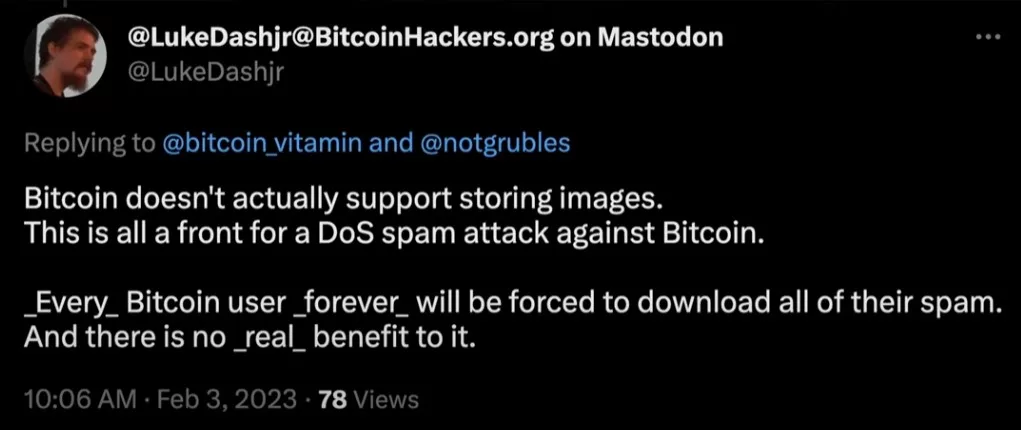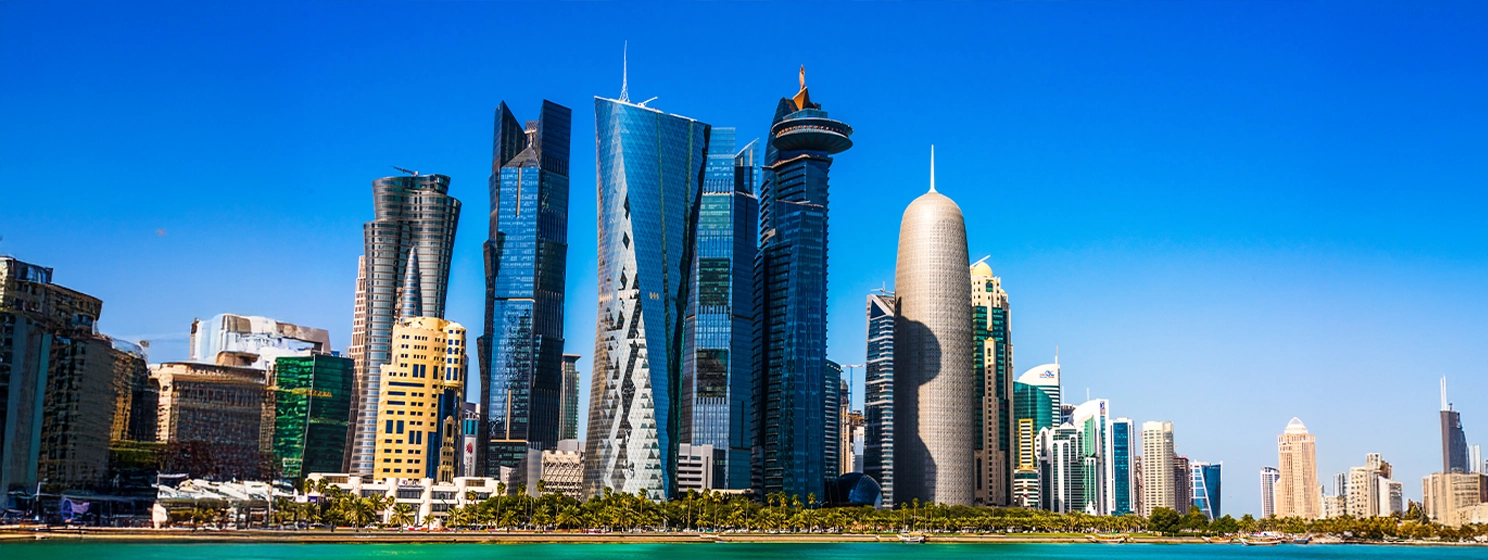|
Getting your Trinity Audio player ready...
|
The emergence of BTC Ordinals, which allow for the inscription of additional information onto individual “satoshis” or “sats” (the smallest transactable unit on Bitcoin-based networks), has finally brought the NFT craze over to BTC.
This has injected some much-needed hype into the Bitcoin-derivative network following an ugly 12 months for the network and the wider industry. Transaction volumes have hit all-time highs, and— in true BTC fashion—so have mining fees.
Ordinals have been highly divisive. Some decry the congestion caused by sending so much traffic through the inherently-limited BTC blockchain, while others have heralded the added attention brought to BTC by NFTs as ‘bullish.’
Executive Chairman of MicroStrategy, @saylor, on the impact of Ordinals on Bitcoin mining and the power of inscriptions.
“What happened with Ordinals and NFTs is we crossed this chasm from what was a bearish scenario to a bullish scenario. If I was a miner I would be ecstatic.” pic.twitter.com/UDIGN5C08I
— Leonidas (@LeonidasNFT) May 9, 2023
It’s lucky, then, that the BTC network is fully decentralized so that the response to this highly controversial development does not depend on the lucky few individuals with the centralized power to make changes to the BTC network. This is especially lucky since lawmakers and regulators are now recognizing that centralized blockchain projects likely amount to illegal securities offerings, and the courts are now entertaining the possibility that centralized blockchain developers are fiduciaries who owe strict obligations to those using their products.
Yes, it’s lucky indeed that BTC is decentralized… right?
Except…BTC is centralized
Except that’s not true at all: BTC is centralized, and BTC core developers are proving it in their response to the Ordinals craze. Those in whom that centralized power resides are already taking steps to nip in the bud what has become a fairly well-received revolution within BTC, as seen from the BTC developer mailing list.
“If the volume does not die down over the next few weeks,” wrote mailing list subscriber Ali Sherief, “should we take action?…Although this community has a strong history of not putting its fingers into pies unless absolutely necessary – an example being during the block size wars and Segwit – should similar action be taken now?”
Luke Dashjr, one of BTC’s most respected core developers, chimed in:
“Action should have been taken months ago. Spam filtration has been a standard part of Bitcoin Core since day 1. It’s a mistake that the existing filters weren’t extended to Taproot transactions. We can address that, or try a more narrow approach like OP_RETURN (ie, what “Ordisrespector” does). Since this is a bug fix, it doesn’t even really need to wait for a major release.”
Another of BTC’s most well-known developers, Peter Todd, added:
“Miners are making millions of dollars from these inscription transactions. Miners can and do run their own nodes and interconnect to each other. Many people like myself will continue to run nodes that do not attempt to block inscriptions. And of course, the current flood of BRC-20 transactions embed very little data in the chain per transaction and could easily be adapted to use OP_RETURN or any number of other data embedding schemes; if they were modified to embed no data at all they wouldn’t be much smaller, and I’m sure you’d still be complaining that they were spam.”
It’s clear the Ordinals’ situation has generated a lively debate throughout the BTC community, including among the developers themselves. But there’s a reason that the consternations and indignations from enthusiasts and BTC HODLers on Twitter are ignored, while conversations between BTC developers—like that quoted above—are scrutinized and reported on in mainstream outlets. It’s because the developers, not the community at large, hold the exclusive power to change the BTC network, and anybody paying the least bit of attention knows that it is from them that the Ordinals answer—whatever it is—will come.
Dashjr has already coded and published his described solution to the Ordinal issue. As he’s already signaled to the mailing list, he doesn’t view its implementation as anything but the prerogative of those with commit power over BTC. After all, if Luke Dashjr decides it’s all spam, then why not have it subject to the spam filtration mechanisms that already exist on BTC?
As of right now, no solution has been implemented. But as we’ve seen from previous massive network updates, all it takes is for the core developers with commit power to choose a solution. Maybe it’s Dashjr’s, perhaps it’s something else: but whatever the decision, it won’t involve anybody but those identified individuals.
Centralized power is nothing new for BTC
Such direct action by identified gatekeepers might surprise newcomers who’ve been taken in by BTC’s promise to be some kind of egalitarian, decentralized institution. The fact is, however, that this centralization has always been key to BTC. It’s as true now as it was in, for example, 2017, when BTC’s core developers made drastic changes to the Bitcoin network by implementing SegWit.
In fact, the core irony to the Ordinals’ chaos is that the very thing that made BRC-20 minting possible—and thus now demanded an exercise of power by BTC’s core devs—was an earlier exercise of centralized power in forcing through the SegWit and Taproot updates to BTC.
The difference now is that people are starting to see through the myth of decentralization, and so when big things happen in BTC, they notice how its developers behave. Now, when you have core BTC developers talking about the perfect response to the biggest driver of popularity BTC has seen in years, the users take note.
bitcoin-core devs want to kill ordinals & BRC-20s
Miners likely want to double down on ordinals & BRC-20s to increase fees and the value of private mempools
Ordinals & BRC-20 holders want the right to exist and pursue growth
Civil war https://t.co/QeoAHJpPN4
— Ryan Berckmans ryanb.eth (@ryanberckmans) May 9, 2023
In addition to revealing the centralized hard power wielding by devs like Todd, it’s also revealed something else: the soft power accruing to these core developers purely by virtue of their status as BTC maintainers. No doubt detecting the accusations of censorship being sent the way of the BTC developers, Luke Dashjr tried another track on Twitter (Dashjr’s Twitter has since been suspended):

Similar rhetoric has come from BTC-OG and Blockstream founder Adam Back:
i retracted/deleted that as it was stupid and getting misinterpreted see here. https://t.co/vLmvCMc3Ts
— Adam Back (@adam3us) January 30, 2023
Source: https://twitter.com/adam3us/status/1620021046178123776?lang=en-GB
There’s something awfully sinister about casting something as an ‘attack on Bitcoin’ when all that’s happening is somebody is using the rules the Core developers themselves created to demonstrate a use-case on the BTC chain.
But if that’s all that creator Casey Rodarmor is doing, then why are BTC’s developers so eager to stamp out Ordinal minting? After all, it has injected some much-needed hype into BTC during a tumultuous time for the asset. Moreover, it’s a rare instance of BTC being used as something other than digital gold, which should be a big win for a blockchain that claims to be the successor to Satoshi’s vision for Bitcoin as electronic cash.
What’s good for Bitcoin is bad for Blockstream
The answer is clear when you consider that BTC’s core developers are the same people who founded Blockstream, which offers the Liquid sidechain, a layer-2 solution to the self-imposed scaling limitations of the BTC protocol, which advocates that transactions be moved off-chain, to Blockstream’s product.
The attention garnered by the ordinal craze is putting pressure on Blockstream’s narrative that block-size limits must artificially cap Bitcoin scaling and thus force everyone to layer-2 solutions. It has also undermined Blockstream’s own NFT solution on Liquid, which never saw anything close to the hype generated by Ethereum’s NFT boom. For Ordinals to see such drastic uptake on BTC all but guarantees that Blockstream’s NFT solution has already left its best days behind.
In that light, it makes perfect sense that BTC core developers are already using the Ordinals fiasco as a pretense to make the BTC network even less able to handle large-scale transactions. To that end, the above-mentioned soft power is being deployed to full effect:

Which, of course, won’t be very good for BTC, but it’ll be great for Blockstream:
Can anyone explain how I'm going to onboard people with these fees?
Can't use on-chain, can't open channels.
Makes custodial Lightning the only option.
And all that because some people think it's fun to "break Bitcoin". Why not use Liquid or RSK? https://t.co/luuqLoNN7d— Anita ⚡🏳️🌈 (@AnitaPosch) May 8, 2023
Follow CoinGeek’s Crypto Crime Cartel series, which delves into the stream of groups—from BitMEX to Binance, Bitcoin.com, Blockstream, ShapeShift, Coinbase, Ripple,
Ethereum, FTX and Tether—who have co-opted the digital asset revolution and turned the industry into a minefield for naïve (and even experienced) players in the market.

 12-20-2025
12-20-2025 




